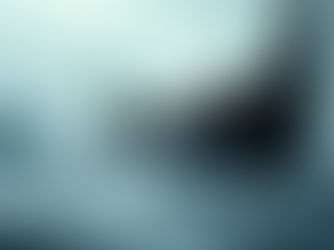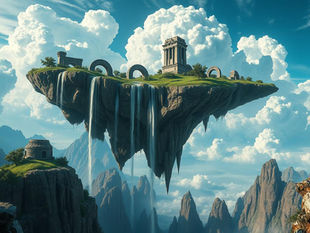
Keep Characters Consistent in Midjourney: Simple Methods
May 1
4 min read
0
0
0

Getting the same character to show up in multiple images can be tricky with AI art tools. Midjourney is powerful, but keeping facial features and styles consistent across different scenes or clothes takes some specific steps. This guide shows you how to use simple techniques like prompting, panning, and remix mode to maintain character consistency in your Midjourney creations.
Start with a Base Character and Multiple Angles
A great way to begin is by asking Midjourney for your character from several viewpoints at once. Use a prompt that describes your character and includes a phrase like "split into multiple images shot from multiple angles".
For example:
[LI]A woman, walking, long dark hair, brown eyes, natural lighting, Kodak Portra 160, split into multiple images shot from multiple angles[/LI]
This gives you an initial grid or collage showing your character from various perspectives. This first image acts as a reference base for all your future consistent generations.
Get More Views with Pan or Custom Zoom
Once you have your base image, you might want more shots of the character without generating a completely new grid. The easiest way is using the Pan feature.
Using Pan
Below your generated image, you'll see arrow buttons (Pan). Click one of these arrows (left, right, up, or down) to expand the image in that direction. Midjourney will generate new sections using your original image as a reference, keeping the character consistent. Panning generally works well and keeps good image quality.
Using Custom Zoom (Alternative)
Another option is Custom Zoom. Click "Custom Zoom" below your image. You can leave the zoom factor at 2x. This out-paints the image, showing more of the surrounding area and potentially more views of the character further away. However, Pan often gives better quality results and maintains resolution more effectively.
Managing many generations and variations like this can become time-consuming. Consider using a tool like the Midjourney Automation Suite from TitanXT to streamline running prompts and managing outputs.
Change Environments and Clothing
Want to see your consistent character on a beach or wearing a jacket? You can do this by combining Remix mode with the Pan feature.
Enable Remix Mode
First, turn on Remix mode in Midjourney's settings. Type `/settings` and select the Remix mode option.
Pan and Edit Prompt
With Remix mode on, click one of the Pan arrows below your base character image. A prompt box will pop up, showing the current prompt used for that image. Now, you can edit this prompt to include a new environment or clothing item while the original character is used as the reference.
To change the environment, add the location to the prompt:
Original + in a forest
Original + at the beach
Original + in a city
To change clothing, add the item:
Original + wearing a denim jacket
Original + wearing a red dress
Original + with a bucket hat
Generate the image. Midjourney will create an expanded image with your character in the new setting or outfit, keeping their face and identity the same. You might need a few re-rolls to get the exact look you want.
Generating Actions and Limitations
You can also try to generate your character doing different actions using the same Pan + Remix method. Edit the prompt after clicking Pan to include actions like "reading a book," "holding a pizza," or "playing guitar."
Be aware that Midjourney can be less consistent when generating specific actions, especially complex ones or those involving hands. Results may vary.
Alternative: The Very Region (Inpainting) Tool
As an alternative to using Pan for changing clothes or environments, you can use the Very Region tool (often called inpainting). Select "Very Region" below your image.
In the editor, select the part of the image you want to change (like the background or clothing). Make sure to leave the character's face and body visible so Midjourney has a reference. Then, type your desired change (e.g., "in a forest," "wearing a leather jacket") into the prompt box and generate. This tool focuses the change on the selected area but might not give as many different full images as the Pan method.
Boosting your Midjourney output volume and managing distinct versions of characters for different scenes is easier with automation. Check out the Midjourney Automation Suite by TitanXT to save time and effort.
Extending Image Borders
Sometimes, your generated character images might feel too cropped, especially if they are part of a collage from the initial prompt. You can use external tools to extend the edges of an image.
Tools like Clipdrop's Uncrop feature (or similar AI out-painting tools like Photoshop's Generative Fill) can analyze your image and intelligently add to the borders, expanding the scene or environment around your characters. Upload your image, adjust the desired border size, and the tool generates the extended version.
Working with Resolution
Remember that Midjourney generates images at a specific resolution. If you need larger or higher-detail images of your characters, you will need to use upscaling methods. There are various tools and techniques available specifically for increasing the size and detail of AI-generated art.
Putting it Together
By using the split image prompt to start, leveraging Pan with Remix mode for environments and clothing, and understanding the options like Custom Zoom and Very Region, you can keep your characters looking consistent across many different images in Midjourney. Experiment with these methods to build scenes and stories with the same visual subjects.
For those serious about creating consistent character assets efficiently, consider how automating tasks could help. The Midjourney Automation Suite from TitanXT offers tools to help manage your workflow and generate variations more effectively.






